Water will diminish transmitted infrared light very well, by altering the lens characteristics and thus dispersion (diffusion, refraction), as well as by absorption.
See this answer for the absorption graph: The red end of the visible spectrum (and more so the Infrared) is absorbed by water about 100 times as strongly as violet/blue:
Hence, a low tech approach would be to use an infrared interruptor switch, such as the GP1A57HRJ00F:
 (source: SparkFun)
(source: SparkFun)
These devices work by emitting infrared light from an IR LED on one side and sensing at the other side. The gap for this particular device is 10 mm, which should be plenty for the purpose.
Adjust the IR LED's current to where the output just barely but reliably switches on in air. When the device is immersed in water, the increased attenuation of IR by water will cause the output to go low.
To make the assembly waterproof, coat the pins, soldered connecting wires and any other exposed metal with some suitable high temperature, waterproof epoxy. For production volumes, you may be able to find assemblers who can do the epoxy coating and insulation immersion test for you in bulk. In any case, the voltages involved are so low that there is no electrocution or catastrophic current flow risk if the insulation fails.
You might also consider an installation design such that only the extremities holding the IR LED and sensor would be immersed in water, the contacts would be above water level. Insulation is still required to survive splashes, but the criticality reduces.
 (source:
(source: